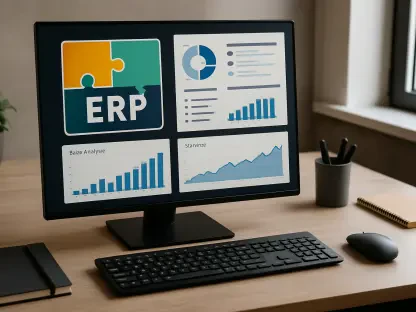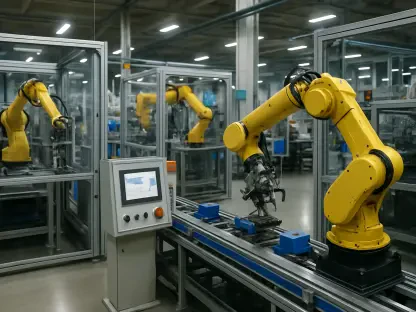Listen to the Article
Not long ago, businesses used traditional content management systems—structured, familiar, and ultimately restrictive. These platforms tended to present obstacles, from security vulnerabilities to rigid frameworks, that made omnichannel content delivery a problem. As digital requirements grew, developers grappled with legacy tools that could not keep up with the speed of innovation.
Then came headless content management systems: a tool designed for flexibility. It gave developers—and, in turn, companies—unprecedented freedom to design, develop, and optimize digital experiences. Brands could publish instantly across websites, mobile apps, and emerging digital channels while maintaining speed, security, and agility.
But why are developers across industries championing these systems for scalability? Most importantly, what does this new trend mean for companies looking to future-proof their digital infrastructure? This article looks at the primary reasons, benefits, and practical use cases that make this innovation the go-to solution for web development today.
What is a Headless Content Management System?
A content management system is a software application that enables the creation, editing, collaborative authoring, publishing, and storage of digital content. A headless system, therefore, is a revolutionary method of content management in which the backend (content storage) is separated from the front end (presentation of content).
Unlike monolithic solutions that dictate their will on how and where content should be presented, a headless system delivers via APIs. This allows developers to use any framework or technology they like to show content on any number of platforms—websites, mobile apps, IoT devices, and more.
This flexibility is why companies that prioritize scalability, omnichannel experiences, and performance are turning to headless solutions. However, to get the complete picture of its effects, you must understand why the conventional model alone is no longer sufficient for today’s digital requirements.
The Shift From Traditional to Headless Systems
For years, companies once relied on legacy platforms like WordPress, Joomla, and Drupal—systems that combined content management and presentation in one package. That worked well when digital experiences were mostly limited to desktop websites. But with companies expanding to mobile apps, smart devices, and emerging digital channels, those legacy systems started to reveal their cracks. That includes the following:
Limited flexibility: Developers are restricted by pre-defined templates and themes.
Scalability issues: Legacy systems cannot handle high traffic or coexist with modern cloud infrastructure.
Security risks: A monolithic content management system is more susceptible to cyber-attacks.
Performance bottlenecks: Tight coupling of the backend to the front end slows down the delivery of content.
A headless approach, on the other hand, decouples information and presentation and serves content via APIs. This allows companies to leverage powerful front-end frameworks, push content across platforms, and automatically scale.
Key Benefits of Headless Content Management Systems—with Examples
These modern systems can enable your organization to provide content across channels—web apps, mobile apps, IoT, smartwatches, digital signs, etc. Since the content is stored independently and sent using APIs, it can be reused and personalized for multiple platforms without duplication.
Example: An e-commerce company built on a headless tool can ensure that product images and descriptions are rendered uniformly on its website, mobile app, and even voice platforms such as Alexa.
Traditional solutions include additional backend processing that slows down web pages. But headless options enable developers to use lightweight and performance-oriented JavaScript frameworks like React, Vue, or Next.js, which translates to web applications that load faster.
Fact: Studies show that even a one-second page load lag can result in 7% fewer conversions and 16% lower customer satisfaction.
Scalability is the biggest problem for today’s businesses, which have witnessed unpredictable web traffic. Headless content management systems are adaptable, with cloud-native and serverless structures that make the applications scale automatically based on demand. That means businesses need not worry about infrastructure choke points or slow performance during times of gigantic traffic anymore.
Case study: A global media company—ContentStack—migrated to a headless option, reducing their content deployment time by 70% and providing smooth scalability across regions.
Unlike traditional platforms that impose some development frameworks, a headless approach gives developers full control of the front end. Developers have full authority over the front end. They can now use newer stacks like Jamstack (JavaScript, APIs, Markup), GraphQL, and static site generators with improved performance and customized features.
Fact: According to a 2024 developer survey, 76% of developers prefer working with API-first platforms like headless systems for greater flexibility.
Since the backend is decoupled from the front end, headless platforms are more resistant to common security threats like DDoS attacks and cross-site scripting. They also offer greater General Data Protection Regulation, California Consumer Privacy Act, and other data protection laws control through tight access control and encryption.
Industry insight: Headless tools are used by most companies today for compliance-based industries like finance, healthcare, and government, where security is of prime concern.
Through a headless content management system, the development team can operate in parallel—content teams design content separately, and developers build and refine the front end separately. This accelerates the cycle of development, allowing for seamless launches of new features or campaigns.
Example: A SaaS company using a headless content management system can deploy new UI innovations without interrupting content team workflow, enabling continuous delivery and innovation.
Choosing the Right Headless Content Management System
Having talked about how valuable a headless system is and how it impacts modern web development, you probably have a list of options that are well worth exploring. Now, in choosing the right one to get the job done, consider the following factors:
API capabilities: Does the system vendor provide RESTful API or GraphQL?
Content model flexibility: Are there field types and validation?
Integrations: Is there built-in integration with the tools and services you currently have? Is there extensibility provided through plugins or modules?
Scalability and performance: Is variable and high traffic volume supported? What form of content delivery network integration does the provider offer?
Pricing and cost of ownership: Is the platform priced monthly via a subscription model, or are open sources available?
To Сonclude
The digital landscape is only set to continue evolving, and developers need tools that can keep up. Headless content management has emerged as a game-changer. By separating the front end and backend, businesses are left unencumbered to deliver content on multiple platforms, integrate with new technologies, and make their online presence future-proof.
Whether for companies powering advanced digital ecosystems or startups that require a nimble core to grow, a headless content management system is no longer an option. It’s the standard for flexible, future-proof web applications. As businesses continue to prioritize omnichannel experiences and seamless scalability, adopting a headless solution isn’t just a wise decision—it’s a competitive necessity.









